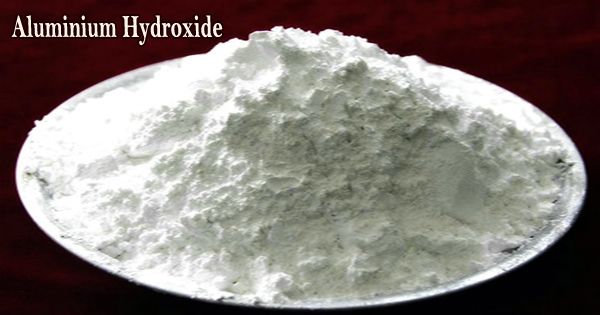The white solid Al(OH)3 aluminium hydroxide is a standard amphoteric hydroxide that is insoluble in water, but soluble in acid or alkali. It is an aluminum-containing inorganic compound. The mineral gibbsite (also known as hydrargillite) and it’s three much rarer polymorphs are present in nature: bayerite, doyleite, and nordstrandite. After being heated in the air for dehydration, it can be converted into alumina, which is necessary for the development of alumina. Aluminium hydroxide, which has both basic and acidic properties, is amphoteric in nature.
Aluminum hydroxide is a commonly used chemical substance that is often used to boost immunogenicity in various immunological preparations; aluminum hydroxide adjuvant is a saline solution composed of aluminum hydroxide gel. It is used mostly as fillers for plastic and silicone, blanket flame retardant and binder, filler for epoxy resin, fillers for toothpaste, glass ingredients, fillers, and coatings for paper paint. Al(OH)3 is composed of double layers of aluminium ion hydroxyl groups that occupy two-thirds of the octahedral holes between the two layers. Aluminum, alum, aluminum fluoride and sodium aluminate, and molecular sieve synthesis may also be used to manufacture sulfuric acid.

Crystal structure of Aluminium Hydroxide
In vaccines, this agent binds to the conjugate of the protein, resulting in enhanced immune system antigen processing. An inorganic salt that is used as an antacid is aluminum hydroxide. The hexagonal forms of all Al(OH)3 crystals are:
- gibbsite is also known as α-Al(OH)3
- bayerite is also known as the β-alumina trihydrate
- nordstrandite
- doyleite
Aluminum hydroxide gel and drying gel can be used as antacids in medicine to neutralize gastric acid and protect the surface of the ulcer to treat gastric and duodenal ulcer disease and hyperacidity. Amphoteric aluminium hydroxide. This works as a Brønsted-Lowry base in acid. It neutralizes the acid, yielding a salt:
3 HCl + Al(OH)3 → AlCl3 + 3 H2O
In bases, it acts as a Lewis acid by binding hydroxide ions:
Al(OH)3 + OH− → Al(OH)4−
Aluminum hydroxide is a typical amphoteric hydroxide which can be soluble in aluminum salt-forming acid which soluble in alkali aluminate forming acid. It is a simple compound that functions by neutralizing the gastric secretions of hydrochloric acid. The activity of pepsin can be inhibited by subsequent rises in pH. Cytoprotective effects can also be associated with a rise in bicarbonate ions and prostaglandins. Hydrothermal-synthesized aluminum hydroxide has the advantages of high purity, small particle size, uniform distribution, easy-to-control crystal shape, and simple activity. This technique is also commonly used in the aluminum hydroxide synthesis process.

Aluminium Hydroxide (White Solid)
At about 180 °C (356 °F), aluminum hydroxide decomposes, absorbing a large amount of heat in the process and releasing water vapor. It has many benefits, including large-scale manufacturing, sufficient raw materials, high purity of the product, and strong acid solubility. Aluminum hydroxide can also be used as an essential raw material, such as barium aluminate, aluminum sulfate, and so on, for the preparation of aluminum salts. Aluminium hydroxide, a term usually reserved for one of several sulfates, is often called “alum”. When stored at 4–308 °C in well-sealed inert containers, the aluminum hydroxide adjuvant is stable for at least 2 years. It must not be allowed to freeze, as it would irreversibly damage the hydrated colloid structure.
Information Sources:
















